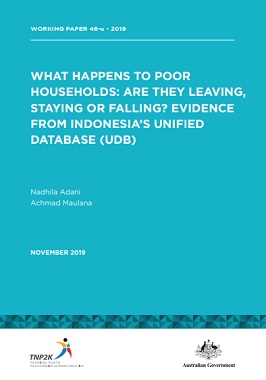What Happens To Poor Households: Are They Leaving, Staying Or Falling - Evidence From Indonesia’s Unified Database (UDB)
Understanding why some households can move out of poverty while others fail is crucial for any effort to reduce poverty. A large number of studies using survey-based data have documented and examined the possible factors that contribute to household movement in-out of poverty. To carry out this project, we constructed a household-level panel data set of approximately 20 million households in Indonesia between 2011 and 2015. We proceed using two approaches, observe the correlation using the existing welfare measure, generated by different PMT models, and observe the same correlation who use a new welfare measure resulted from the same PMT model. We found that, in general, results are lower in magnitude than the existing model, however, trends are consistent across models and groups. On the household human capital characteristic, we find that the more education that each household member earned, the more likely they help their households to move out of poverty. While we see no clear pattern on the correlation between sets of demographic variables and the household welfare change, the correlation between physical assets with changes in welfare rank seems to be consistent across different approaches.
